Eating a variety of vegetables is essential for maintaining a healthy diet, and when it comes to vibrant colors, orange vegetables are a standout hue that signifies a wealth of nutritional benefits. In this guide, we will explore 10 orange vegetables and their myriad of health benefits, uncover intriguing facts, and find ways to incorporate these 10 orange gems into your daily meals. From carrots to sweet potatoes, squash to pumpkin, these veggies add an orange zest to your meals that you'll love.

Jump to:
Why Are They Orange
The orange color in vegetables and fruits is primarily due to the presence of compounds called carotenoids. Let's dive into some details:
Carotenoids: The Source of Orange
Carotenoids are a group of pigments that are naturally found in many plants. They give a characteristic orange hue to vegetables and fruits when present in high amounts. Let's delve into how they function:
1. Beta-Carotene
- This is the most common carotenoid found in orange vegetables and fruits.
- It's a precursor of Vitamin A, which means the body converts it into this essential vitamin.
- Beta-carotene is a powerful antioxidant and plays a vital role in vision, growth, and immune system function.
- Found in: Carrots, sweet potatoes, pumpkins, and many other orange-colored produce.
2. Alpha-Carotene
- Similar to beta-carotene but not as efficiently converted to Vitamin A.
- Still contributes to the orange coloration and offers some health benefits.
- Found in: Pumpkins, carrots, and winter squash.
3. Other Carotenoids
- Other carotenoids like lutein and zeaxanthin might contribute to the coloration but are often found in conjunction with beta-carotene.
- These other carotenoids are more often associated with yellow and green colors in vegetables.
Why Plants Produce Carotenoids
Carotenoids are not just for show; they serve essential functions in plants:
- Photosynthesis Support: They assist in photosynthesis by helping in light absorption and protecting the plant from damage caused by excess light.
- Attracting Pollinators: The bright orange color attracts birds and insects, facilitating pollination.
- Protection Against Diseases: As antioxidants, carotenoids can help protect the plant against various diseases.
So when you enjoy orange veggies, you're feasting on vibrant colors and nourishing your body with some vital health-promoting compounds. Let's dig into the best orange vegetables and learn more about them.
Sweet Potatoes
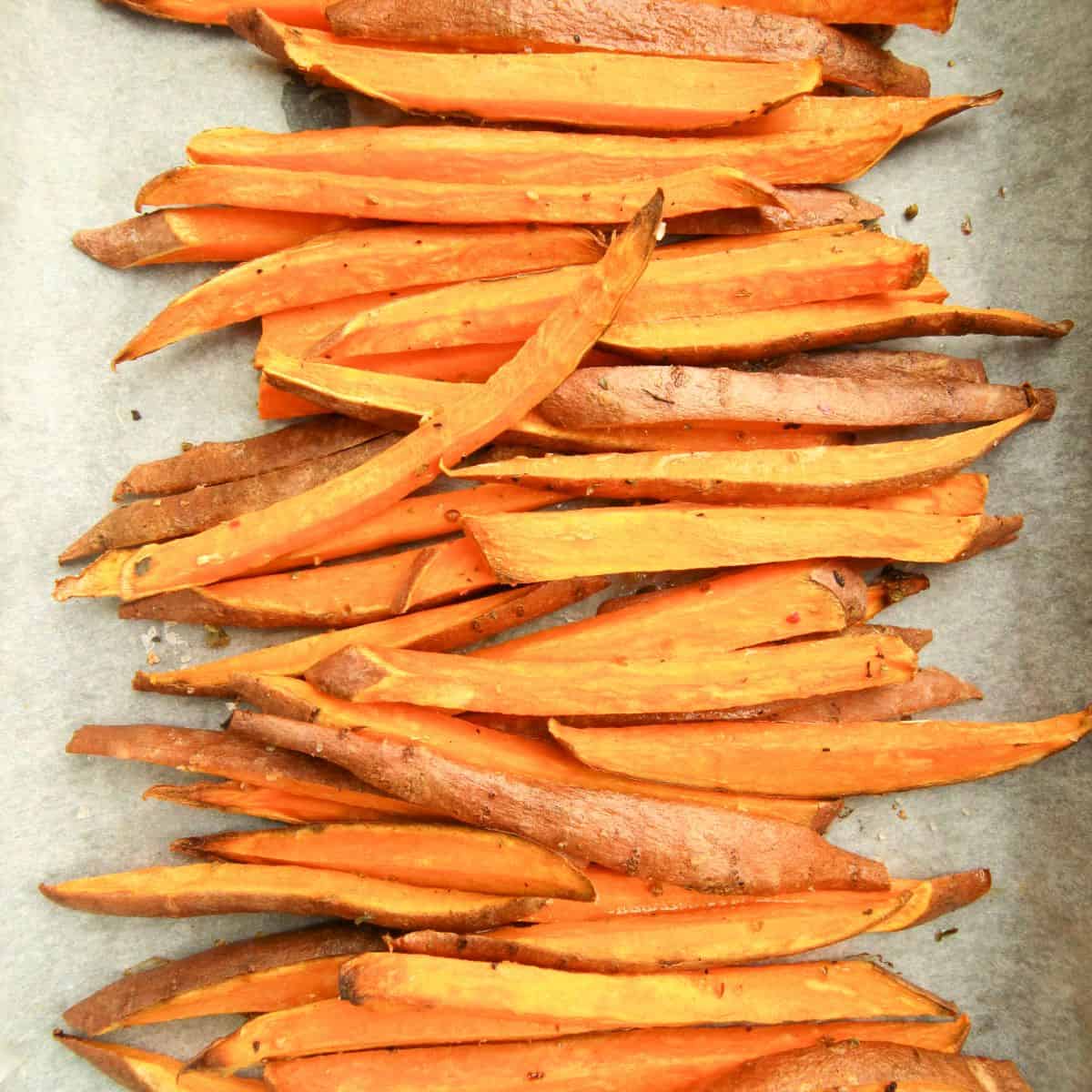
Sweet potatoes are often hailed as one of the healthiest orange vegetables. These root vegetables contain many nutrients, including beta-carotene, manganese, copper, fiber, Vitamin B6, potassium, and iron. One medium sweet potato can meet and exceed your daily Vitamin A needs, making it an excellent choice for boosting your immune system and promoting healthy vision.
- Fun Fact: Despite the name, sweet potatoes are unrelated to regular potatoes. They belong to the morning glory family, while regular potatoes are part of the nightshade family. Additionally, sweet potatoes are often confused with yams but differ botanically. True yams are starchier and drier, while sweet potatoes are sweeter, as the name suggests.
- Origin: Sweet potatoes are believed to have originated in Central or South America. Archaeological evidence shows that they may have been cultivated as far back as 5,000 years ago in these regions. Today, they are grown and enjoyed worldwide.
- Preparation: Sweet potatoes are incredibly versatile in the kitchen. They can be boiled, baked, roasted, mashed, fried, or grilled. They are used in various dishes, from savory sides like roasted sweet potato wedges to sweet treats like sweet potato pie. Try sweet potatoes in sweet potato and red lentil stew.
- Season: While sweet potatoes can be grown year-round in tropical climates, in more temperate regions, they are typically planted in late spring and harvested in late summer through early fall. Thanks to their excellent storage properties, sweet potatoes are often available in stores yearly.
Squash
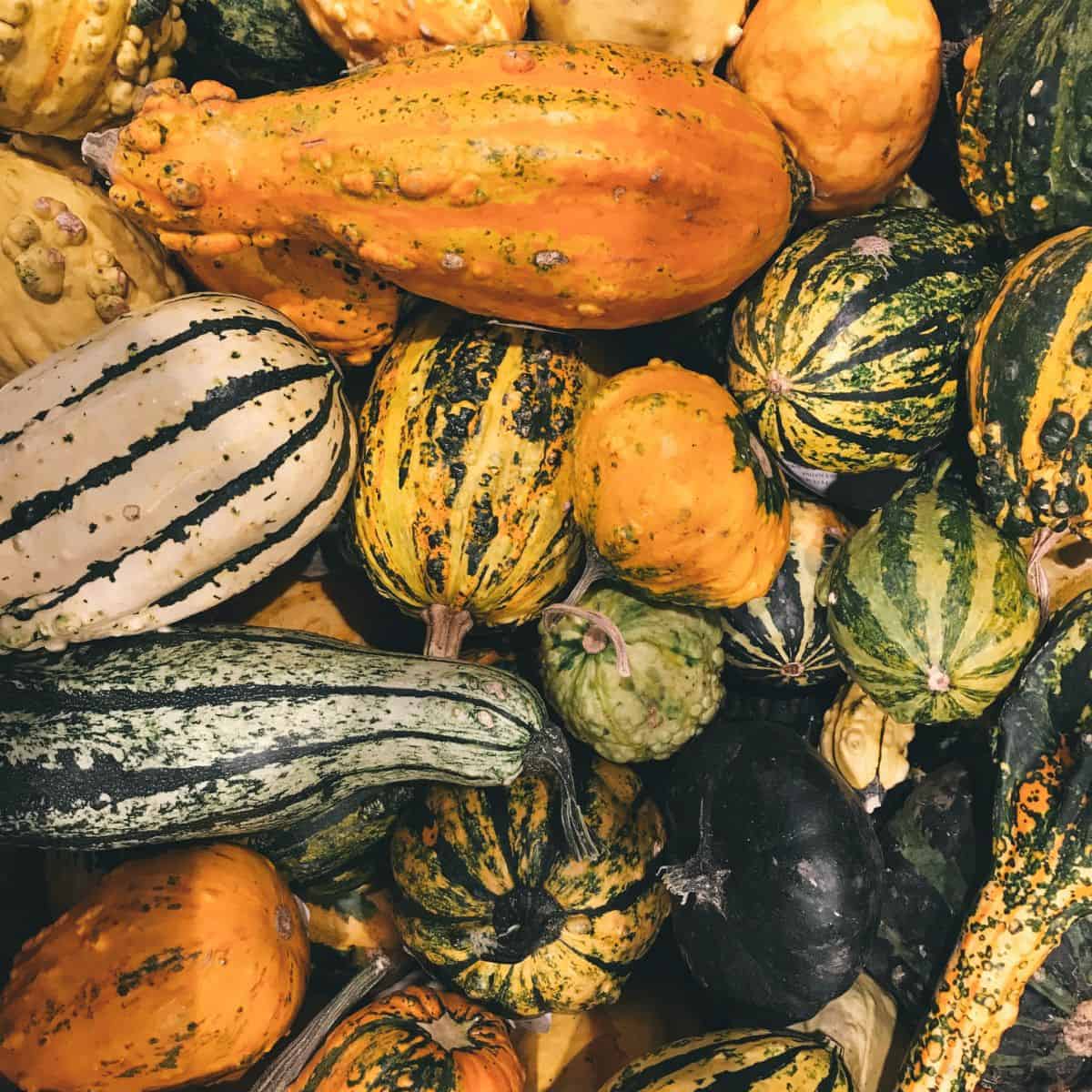
Squash has been a part of human diets for millennia. Its many varieties offer an array of flavors, textures, and culinary possibilities. From the refreshing crispness of a raw zucchini salad to the comforting warmth of a butternut squash soup, squash can be enjoyed in countless ways throughout the year.
- Fun Fact: Squash is one of the "Three Sisters" in Native American agriculture, along with corn and beans. These three crops were traditionally grown together, as they benefit one another: the corn provides a structure for the beans to climb, the beans fix nitrogen in the soil, and the squash leaves shade the soil to retain moisture.
- Origin: Squash has a rich history, with origins dating back thousands of years. It is believed to have first been cultivated in Mesoamerica, and its seeds have been found in archaeological sites dating back to 8000-10,000 years ago.
- Preparation: Squash is incredibly versatile in cooking. Summer squashes like zucchini and yellow squash are often grilled, sautéed, or used in salads. Winter squashes like butternut, acorn, and spaghetti squash are commonly roasted, mashed, or used in soups. Squash blossoms are also edible and can be stuffed, fried, or used in salads. Try this split pea and barley soup with butternut squash.
- Season: Squash can be divided into two main categories: summer and winter squash. Summer squashes are harvested when immature and are available from late spring through summer. Winter squashes are harvested when mature and are typically available from late summer through early winter. Some types of winter squash store well and can be found year-round.
Pumpkin

Pumpkins symbolize fall, bringing joy through their bright orange appearance, decorative possibilities, and delightful flavor. They offer many culinary opportunities, from the savory to the sweet, and are a nourishing addition to the diet. Whether you're carving a spooky jack-o'-lantern or enjoying a slice of homemade pumpkin pie, pumpkins are sure to bring a smile to your face and warmth to your belly!
- Fun Fact: Pumpkins are technically a fruit! Because they contain seeds and develop from a flower, they are classified as fruits rather than vegetables.
- Origin: Pumpkins are believed to have originated in North America, with seeds from related plants found in Mexico dating back over 7,500 years ago. Native Americans were growing pumpkins long before the arrival of European explorers, and they were a crucial part of the indigenous diet.
- Preparation: Pumpkins can be used in a wide variety of dishes. The flesh can be roasted, pureed, or turned into soups and stews. Many people associate pumpkins with sweet treats like pumpkin pie, muffins, and bread. Pumpkin seeds, or pepitas, can be roasted and eaten as a snack or added to salads for a crunchy texture. Even the flowers are edible and can be stuffed or fried. Try pumpkin in the best Cuban-inspired vegan lentil soup.
- Season: Pumpkins are typically planted in late spring to early summer and harvested in late summer through early fall. They are most prominently available in the fall, aligning with the Halloween and Thanksgiving celebrations.
Carrots
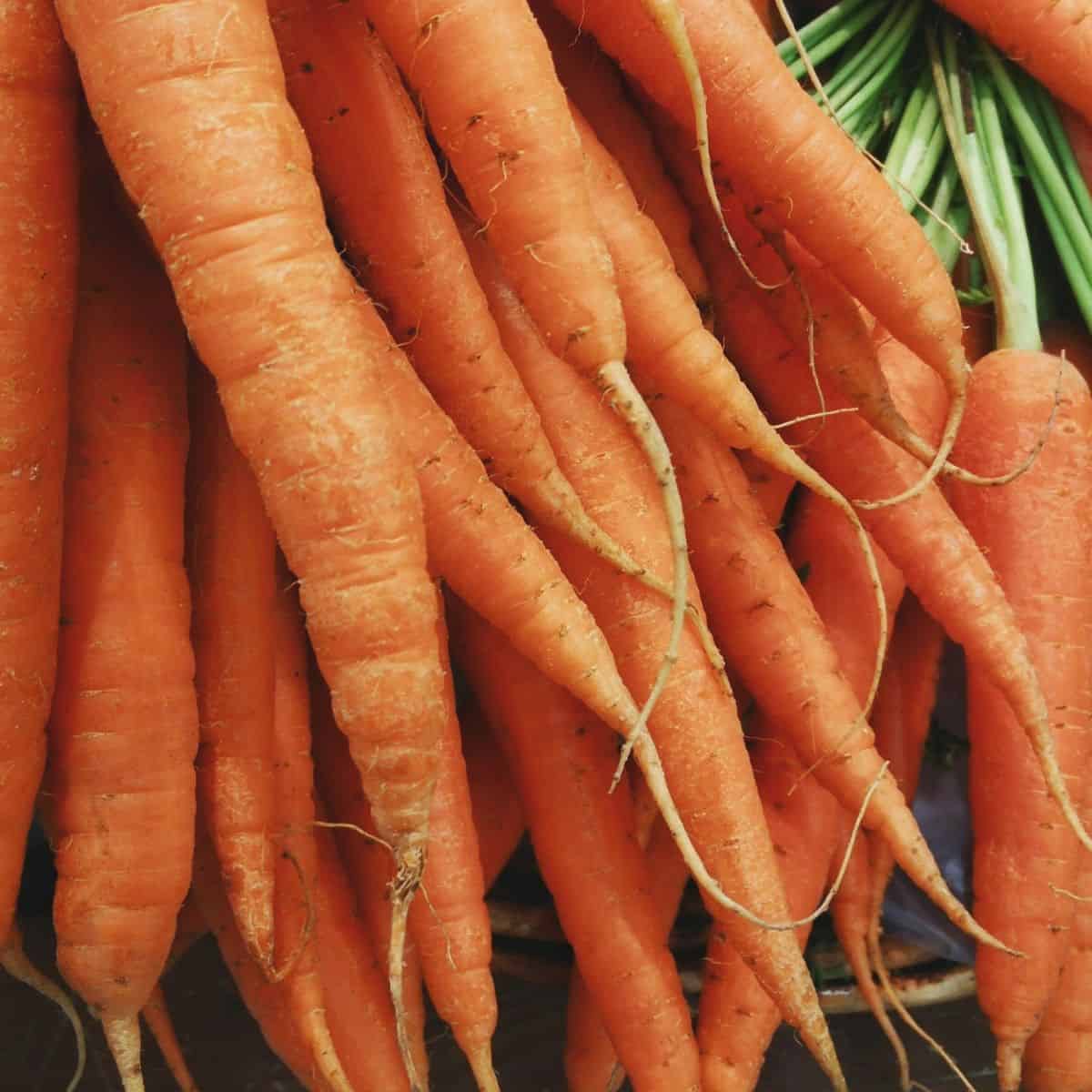
Whether you're enjoying them in a simple snack or a complex culinary creation, carrots are a dependable and delicious ingredient that can be a part of meals across cultures and cuisines!
- Fun Fact: Carrots are most often associated with the color orange, but they come in a rainbow of colors, including purple, yellow, red, and white. The orange color we're so familiar with is the result of selective breeding in the Netherlands in the 17th century, and it's believed to have been developed as a tribute to the House of Orange, the Dutch Royal Family. For more on purple carrots, visit Top 10 Purple Vegetables.
- Origin: Carrots are thought to have originated in the region that is now Afghanistan over 1,000 years ago. Those early carrots were likely purple and yellow. They spread to other parts of the world through trade and cultivation, leading to the development of the various types we have today.
- Preparation: Carrots are incredibly versatile in cooking. They can be eaten raw, steamed, boiled, roasted, or even juiced. They're a staple in salads and a key component in mirepoix, the aromatic base for many soups and stews. Carrots are also used in sweet dishes like carrot cake and puddings. Include raw carrots in vegan summer rolls, vegan falafel wrap, and Thai peanut noodle salad. Try them cooked in vegan chickpea and potato turnovers and healthy red lentil soup.
- Season: Carrots are a cool-season crop that can be grown in spring and fall. In milder climates, they can be grown year-round. Many regions have local carrots from late spring through early winter, but they are typically available in grocery stores throughout the year thanks to global agriculture.
Orange Bell Peppers
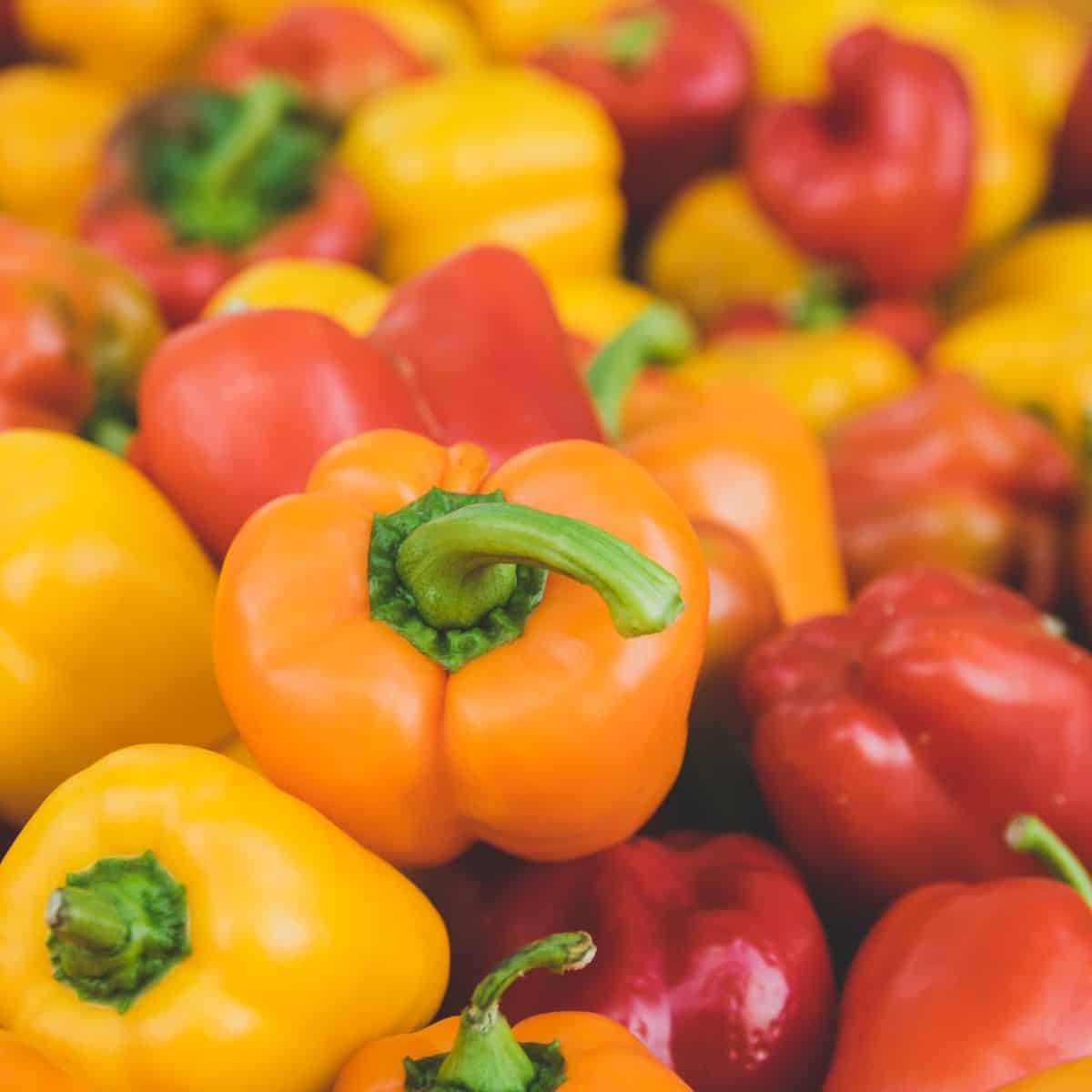
Orange bell peppers are a delicious way to add color, flavor, and nutrition to a meal. They're high in Vitamin C and other antioxidants, making them a tasty and healthy choice. Enjoying them in a fresh summer salad or a comforting winter casserole, orange bell peppers will brighten your plate and please your palate!
- Fun Fact: Orange bell peppers are green bell peppers allowed to ripen fully. Bell peppers, including the orange variety, are unique in the chili pepper family because they lack capsaicin, the compound that gives hot peppers their heat. All bell peppers, regardless of color, are sweet and mild. Orange bell peppers, in particular, provide a vibrant color and slightly fruity flavor that can add a special touch to your dishes.
- Origin: Bell peppers are believed to have originated in Mexico, Central America, and northern South America. The cultivation of different colors, including orange, has evolved through selective breeding. Now, orange bell peppers are grown and enjoyed worldwide. To read more about red peppers, visit Top 11 Red Vegetables.
- Preparation: Orange bell peppers can be enjoyed raw or cooked. They're excellent in salads, sandwiches, and wraps when raw, providing a crisp texture. They become tender and sweet when cooked, making them a great addition to stir-fries, roasted vegetable medleys, or stuffed pepper recipes. Add orange peppers to a high-protein tofu scramble, saucy gochujang noodles, or vegan chickpea salad.
- Season: Bell peppers grow best in warm weather. You can typically find them fresh from late spring through early fall. However, thanks to modern agricultural practices, orange bell peppers are available in grocery stores year-round.
Orange Tomatoes

While technically a fruit, I included orange tomatoes because we typically think of them as a vegetable. They also offer a unique flavor profile that can enhance various dishes. Whether you're enjoying them fresh in a summer salad or incorporating them into a savory sauce, these sweet and vibrant tomatoes are sure to delight your taste buds!
- Fun Fact: Orange tomatoes often have a higher sugar content than their red counterparts, leading to a sweeter taste. They're also typically less acidic, making them a preferred choice for those sensitive to the acidity of traditional red tomatoes.
- Origin: Tomatoes are native to western South America but have been cultivated in various colors, including orange, for centuries. Orange tomatoes come in various heirloom and hybrid varieties, like the "Sun Gold" cherry tomato, known for its incredibly sweet flavor.
- Preparation: Orange tomatoes can be used like red tomatoes in culinary preparations. They can be enjoyed raw in salads, sandwiches, and salsas or cooked in sauces and stews. Try them in vegan creamy tomato soup or sliced with a little salt as a side dish with vegan baked mac and cheese.
- Season: Tomatoes grow best in warm weather, making late spring through early fall the prime season for most regions. In areas with mild winters, you might find tomatoes growing year-round.
Orange Cauliflower

Orange cauliflower is an exciting twist on a familiar vegetable, offering aesthetic appeal and additional nutritional benefits. It can be a fun way to introduce more vegetables to children or simply to brighten up a meal with its vibrant color.
- Fun Fact: Orange cauliflower owes its color to a natural mutation that occurred in a cauliflower field in Canada in the 1970s. This mutation led to higher levels of beta-carotene in the cauliflower, giving it an orange hue. Not only does it look different, but the beta-carotene also provides additional Vitamin A compared to white cauliflower.
- Origin: As mentioned above, the first orange cauliflower was discovered in Canada. Since its discovery, it has been further developed through selective breeding and is now available in various markets worldwide.
- Preparation: Orange cauliflower can be prepared in the same ways as the white variety. It's great roasted, steamed, mashed, or even used to make cauliflower rice. The vibrant orange color can add visual appeal to dishes, and some find the flavor slightly sweeter and creamier than white cauliflower. Use orange cauliflower in roasted cauliflower tacos with romesco sauce for a delicious meal.
- Season: Cauliflower, including the orange variety, is generally a cool-season crop. It's typically planted in the spring or fall and harvested in late spring through early fall, depending on the region. In some places, you may find it available year-round.
Orange Kohlrabi
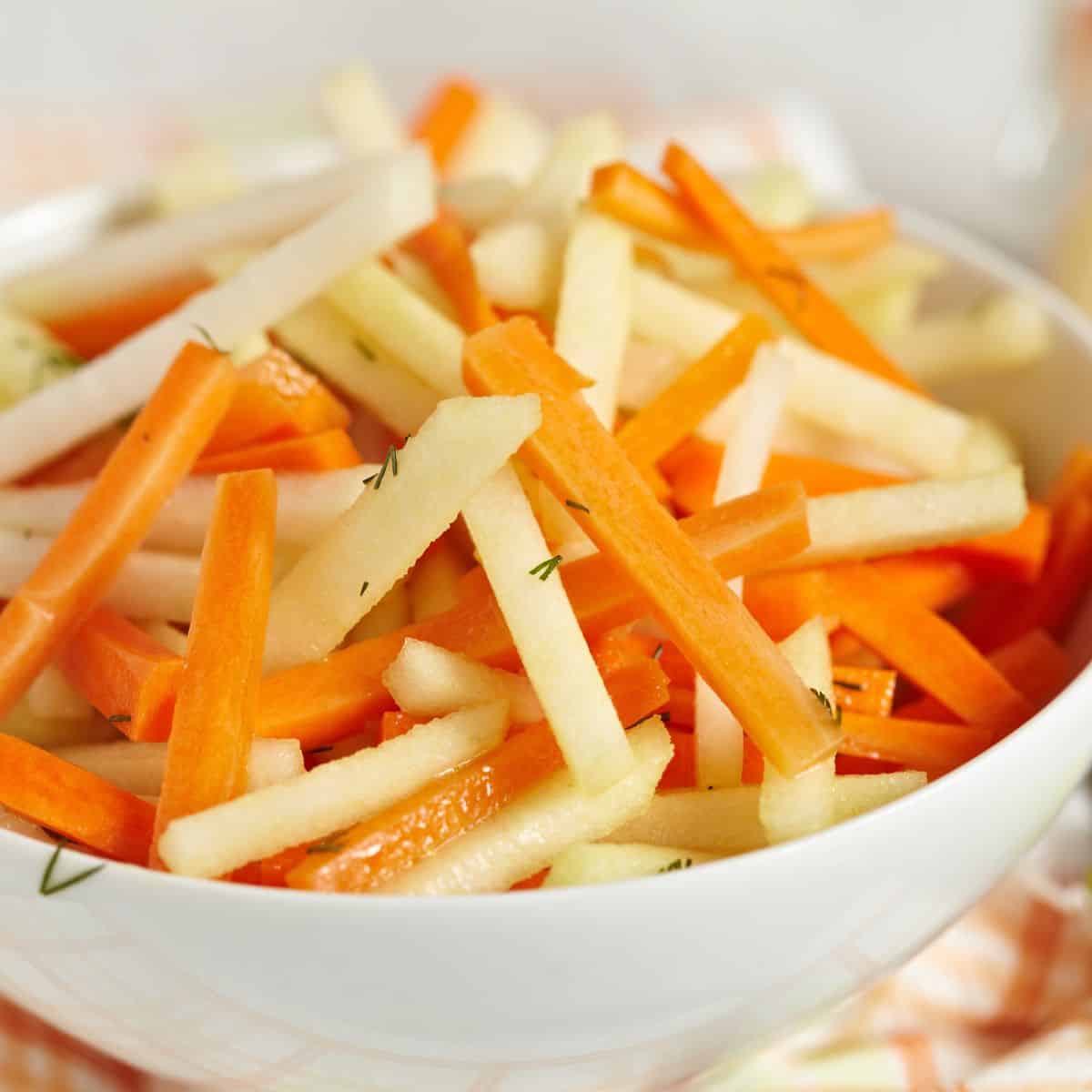
Orange kohlrabi is a unique vegetable that offers not only a visual appeal but a pleasing taste and texture as well. Its versatility in preparation makes it an exciting addition to various culinary creations, from simple salads to hearty cooked dishes. If you can try it, don't hesitate to explore this vibrant and nutritious vegetable!
- Fun Fact: Kohlrabi is sometimes called a "space cabbage" because of its unusual, almost alien-like appearance. The name "kohlrabi" itself translates to "cabbage turnip" in German, describing its unique flavor that's a mix between the two vegetables.
- Origin: Kohlrabi originated in Northern Europe, and its cultivation dates back to Roman times. It has been a staple in German and Eastern European cuisines but has started to gain popularity worldwide.
- Preparation: Orange kohlrabi can be enjoyed both raw and cooked. When raw, it adds a fresh, crunchy bite to salads and slaws. When cooked, it becomes tender and sweet, perfect for roasting, stir-frying, or adding to soups and stews. Julienne orange kohlrabi along with cabbage and carrots in purple cabbage slaw.
- Season: It grows best in cool weather, making spring and fall the ideal seasons for planting and harvesting kohlrabi. If you're shopping for it, you might find it at farmers' markets or specialty stores during these times.
Habanero peppers

Habanero peppers are a vibrant addition to many culinary traditions, especially in Mexican and Caribbean cuisines. Their intense heat can be a thrilling experience for spice lovers, but it's also their unique flavor that makes them an attractive option for enhancing various dishes.
- Fun Fact: Habanero peppers are among the hottest chilies in the world. Ranking between 100,000 to 350,000 on the Scoville Heat Scale, they're not for the faint of heart! Despite their heat, they have a fruity, citrus-like flavor that can add complexity to dishes.
- Origin: Habanero peppers are believed to have originated in the Amazon region and spread to Mexico and other parts of Central America. The name "Habanero" originates from Havana, Cuba, but the pepper is most strongly associated with the Yucatán Peninsula in Mexico.
- Season: Habanero peppers are typically grown in tropical and subtropical climates, making them a year-round crop in some regions. In more temperate areas, they thrive in the summer months, usually harvested from late summer through early fall.
- Preparation: Handling Habanero peppers requires care, as their oils can irritate the skin. It's advisable to wear gloves when handling them. They can be used fresh, dried, or powdered in various dishes, such as salsas, marinades, or sauces. Removing the seeds and membranes can reduce the heat level if desired. Cooking Habanero peppers can also mellow their heat slightly, allowing more of their fruity flavor to shine.
Learn more about handling habanero peppers and how to make a delicious salsa recipe by visiting the post mango habanero salsa.
Yams
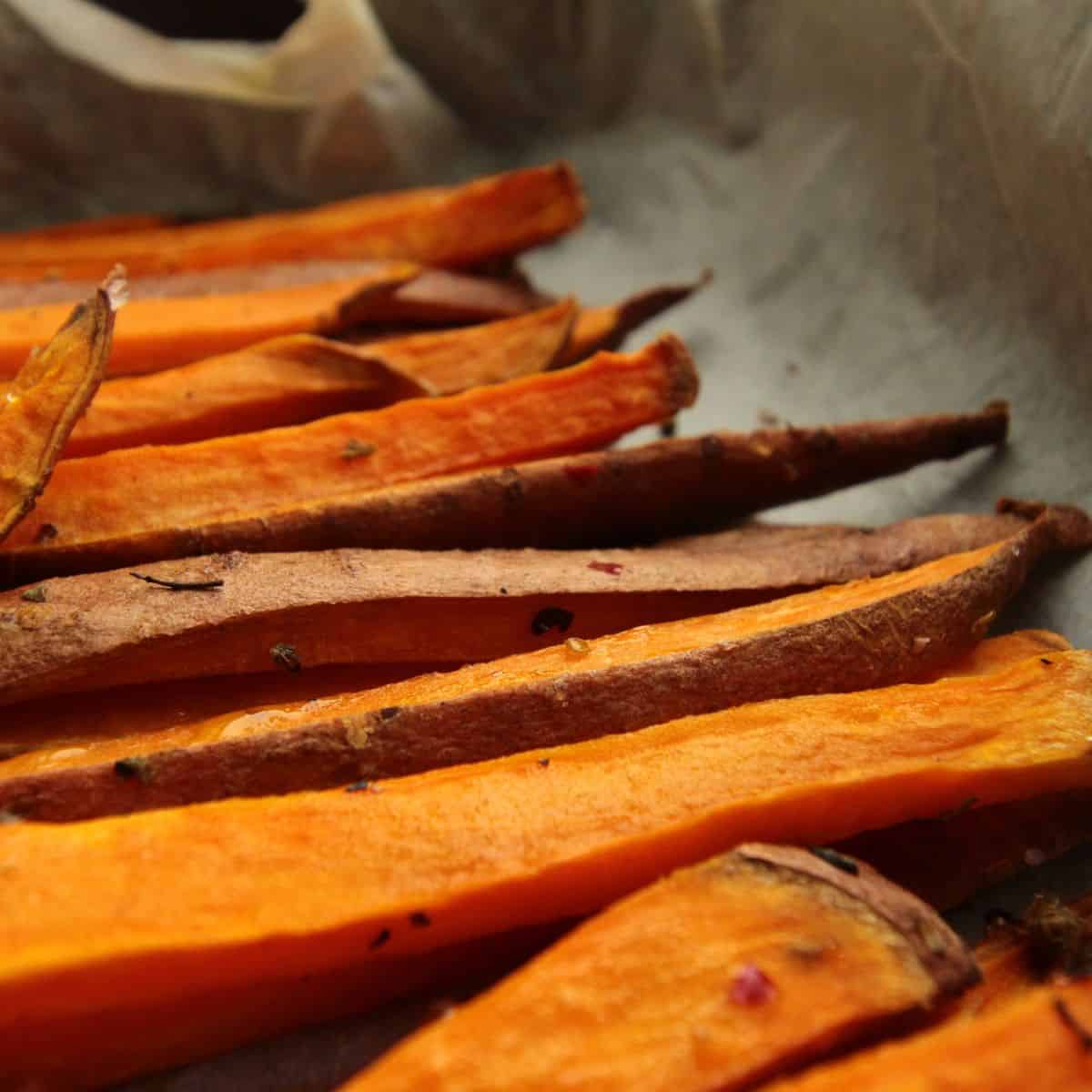
Yams are a fascinating and nourishing food that has been vital to various cultures for centuries. Their versatility in cooking means they can be enjoyed in a wide array of dishes, from simple roasted sides to complex stews and soups. If you find true yams at a local market, don't hesitate to try them out and experience a taste that has nourished and delighted people across continents!
- Fun Fact: Yams are often confused with sweet potatoes, especially in the United States, but they are entirely different botanical species. True yams can grow quite large, with some reaching over five feet in length and weighing over 100 pounds!
- Origin: Yams are native to Africa and Asia. They hold significant cultural importance in various West African countries, where they are a staple food and are even celebrated with festivals.
- Preparation: Yams have a starchy texture and mild flavor, which makes them versatile in cooking. They can be boiled, mashed, fried, or roasted. In African cuisines, yams are often pounded into a smooth paste called "fufu." It's important to note that yams should always be cooked, as they can be bitter and sometimes even toxic when raw. Roast yams and eat them along with roasted chickpeas croutons for a delicious quick meal.
- Season: Yams are typically harvested in late summer through early fall. However, they are often available year-round in stores, thanks to international trade and their long storage life.
Takeaways
So, add some orange produce to your basket the next time you're grocery shopping. Whether roasting carrots, pureeing butternut squash soup, or enjoying a refreshing orange snack, you'll nourish your body with a rainbow of nutrients and savor the vibrant flavors of nature's bounty. Cheers to the power of orange vegetables and their joy to our plates and health!
To learn more interesting facts about vegetables, visit:
- Top 17 Yellow Fruits and Vegetables (With Pictures)
- Top 10 Purple Vegetables
- Top 11 Red Vegetables
- 9 White Fruits and Vegetables (With Pictures)



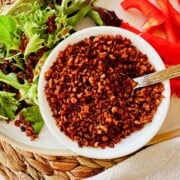











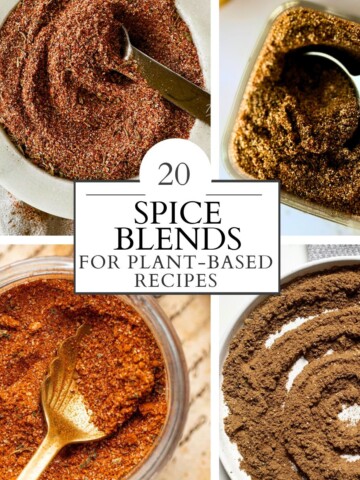

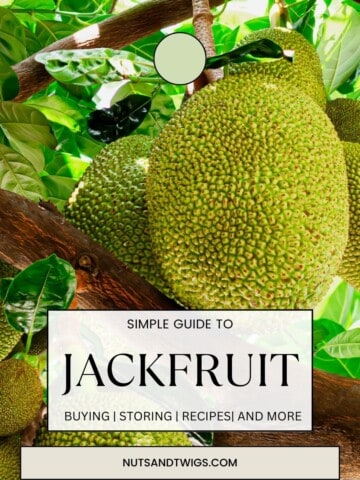



Comments
No Comments